PECPR regulations discussion document - Department of Labour
PECPR regulations discussion document - Department of Labour
PECPR regulations discussion document - Department of Labour
Create successful ePaper yourself
Turn your PDF publications into a flip-book with our unique Google optimized e-Paper software.
Proposed amendments to HSE<br />
(Pressure Equipment, Cranes and<br />
Passenger Ropeways) Regulations<br />
CONSULTATION DOCUMENT
Proposed amendments to HSE (Pressure Equipment, Cranes and<br />
Passenger Ropeways) Regulations<br />
The <strong>Department</strong> is consulting on two proposed minor amendments to the Health and Safety<br />
in Employment (Pressure Equipment, Cranes and Passenger Ropeways) Regulations 1999<br />
(the <strong>PECPR</strong> Regulations). Both are to clarify coverage <strong>of</strong> the <strong>regulations</strong>.<br />
Section 21 <strong>of</strong> the Health and Safety in Employment Act 1992 requires that interested parties be<br />
consulted on any amendments to <strong>regulations</strong>.<br />
1. COMPRESSED GAS CYLINDERS<br />
Currently, the <strong>PECPR</strong> Regulations could be seen as<br />
covering compressed gas cylinders in a place <strong>of</strong> work<br />
because <strong>of</strong> an outdated reference to the Dangerous<br />
Goods (Class 2 – gases) Regulations 1980. This is<br />
unintended.<br />
In response we propose amending the <strong>regulations</strong><br />
to make it clearer that compressed gas cylinders<br />
fall instead within the jurisdiction <strong>of</strong> the Hazardous<br />
Substances and New Organisms (HSNO) Act 1996, and<br />
as Parliament intended.<br />
The control <strong>of</strong> compressed gas cylinders previously<br />
fell under the Dangerous Goods (Class 2 – gases)<br />
Regulations 1980, enacted under the Dangerous Goods<br />
Act 1974.<br />
When promulgated in 1999, the <strong>PECPR</strong> Regulations<br />
specifically excluded cylinders that fell under the<br />
Dangerous Goods (Class 2 – gases) Regulations,<br />
including compressed air cylinders. The Dangerous<br />
Goods (Class 2 – gases) Regulations were revoked in<br />
2006 by the HSNO Act and replaced by the Hazardous<br />
Substances (Compressed Gases) Regulations 2004<br />
(Compressed Gases Regulations).<br />
There was no consequential amendment to expressly<br />
update the <strong>PECPR</strong> Regulations to reflect this<br />
replacement. This means that the <strong>PECPR</strong> Regulations<br />
could be seen as covering items that were not<br />
intended.<br />
Legally, the reference to the Dangerous Goods (Class<br />
2 – gases) Regulations can be read as the Compressed<br />
Gases Regulations that replaced them, meaning that<br />
the coverage issue does not arise. However, for the<br />
sake <strong>of</strong> clarity and transparency, the <strong>Department</strong><br />
considers that this coverage issue should be<br />
corrected.<br />
2. LOW-HAZARD AEROSOLS AND<br />
CARTRIDGES<br />
A similar issue has arisen with the unintended coverage<br />
<strong>of</strong> low-hazard aerosols and cartridges. This is because<br />
Disclaimer: The <strong>Department</strong> <strong>of</strong> <strong>Labour</strong><br />
has made every effort to ensure that the<br />
information contained in this publication<br />
is reliable, but makes no guarantee <strong>of</strong><br />
its completeness. The <strong>Department</strong> may<br />
change the contents <strong>of</strong> this guideline at<br />
any time without notice.<br />
© Crown copyright 2008<br />
This material is Crown copyright unless otherwise<br />
stated and may be reproduced free <strong>of</strong> charge<br />
without requiring specific permission. This is<br />
subject to it being reproduced accurately and<br />
not being used in a derogatory manner or in a<br />
misleading context. The source and copyright<br />
status should be acknowledged. The permission<br />
to reproduce Crown copyright protected material<br />
does not extend to any material in this report that<br />
is identified as being the copyright <strong>of</strong> a third party.<br />
Published by the<br />
<strong>Department</strong> <strong>of</strong> <strong>Labour</strong><br />
Wellington<br />
New Zealand<br />
www.dol.govt.nz<br />
May 2008<br />
ISBN 978-0-478-28207-8
although low-hazard aerosols and cartridges are<br />
specifically excluded from the Compressed Gases<br />
Regulations, they are not specifically excluded from<br />
the <strong>PECPR</strong> Regulations, and so are unintentionally<br />
“caught” by the wide coverage <strong>of</strong> the latter.<br />
This means that these low-hazard items are covered<br />
by the requirements <strong>of</strong> the <strong>PECPR</strong> Regulations. The<br />
practical consequence <strong>of</strong> this is nil, as the hazard<br />
analysis applied to these items will lead to them not<br />
requiring certification or inspection.<br />
The <strong>Department</strong>’s view is that neither set <strong>of</strong><br />
<strong>regulations</strong> should cover these types <strong>of</strong> items, due<br />
to the minimal hazards they represent.<br />
However, the <strong>Department</strong> considers that for the<br />
sake <strong>of</strong> clarity, this unintentional coverage should be<br />
corrected.<br />
WE ARE SEEKING STAKEHOLDERS’ VIEWS<br />
ON THE PROPOSED SOLUTION<br />
We would like to know:<br />
• if you or your organisation support the<br />
proposed amendment<br />
• if you agree or disagree, any reasons for<br />
your view<br />
• any alternatives where appropriate, or further<br />
comments in support <strong>of</strong> your suggestions.<br />
You can either e-mail your comments to<br />
<strong>PECPR</strong>@dol.govt.nz or send them to:<br />
c/o Bob White<br />
Senior Policy Analyst<br />
Workplace Health and Safety Policy<br />
<strong>Department</strong> <strong>of</strong> <strong>Labour</strong><br />
P O Box 3705<br />
Wellington<br />
The closing date for comments is 19 July 2008.<br />
Proposed Solution<br />
Schedule 2 <strong>of</strong> the <strong>PECPR</strong> Regulations contains<br />
items that are excluded under the <strong>PECPR</strong><br />
Regulations. We propose to amend schedule 2 by:<br />
i. removing the reference to the Dangerous Goods<br />
(Class 2 – gases) Regulations 1980 and then<br />
ii. substituting the item “Cylinders” which will have<br />
the meaning given to it by regulation 3 <strong>of</strong> the<br />
Hazardous Substances (Compressed Gases)<br />
Regulations 2004<br />
To correct the unintentional coverage <strong>of</strong> low hazard<br />
aerosols and cartridges, we propose to include in<br />
Schedule 2 the following item:<br />
Low hazard pressure containers—equipment<br />
excluded is—<br />
a Aerosol dispensers; and<br />
b Aerosol containers with a water capacity <strong>of</strong> less<br />
than 50 mL or for which the absolute pressure<br />
developed at 20°C is less than 170 kPa; and<br />
c Cartridges with a water capacity <strong>of</strong> less than<br />
170 mL; and<br />
d Non-refillable containers with a water capacity<br />
<strong>of</strong> less than 100 mL; and<br />
e Cylinders with a water capacity <strong>of</strong> less than<br />
120 mL, if the contents are a liquefied gas with<br />
flammable properties; and<br />
f Cylinders with a water capacity <strong>of</strong> less than 500<br />
mL, if the contents are not a liquefied gas with<br />
flammable properties<br />
The terms aerosol, aerosol dispenser, cylinder, and<br />
water capacity will have the same definition as in<br />
the Compressed Gases Regulations. This is intended<br />
to enhance consistency <strong>of</strong> terminology and clearer<br />
coverage between the <strong>PECPR</strong> Regulations and the<br />
Compressed Gases Regulations.
YOUR VIEW ON THE PROPOSED SOLUTION:


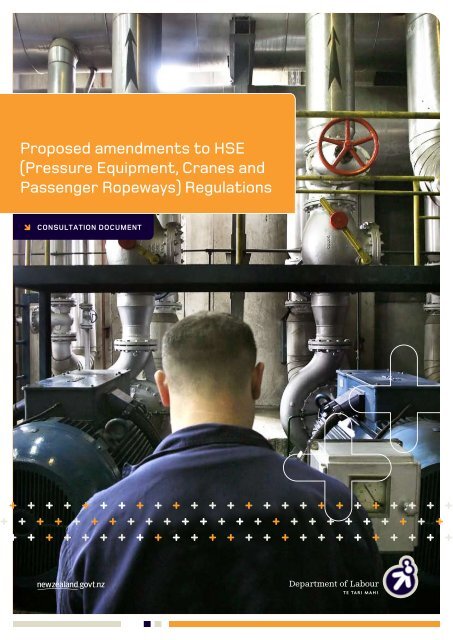
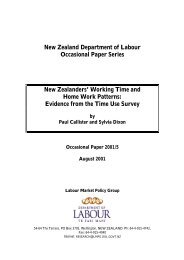

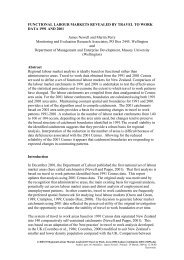
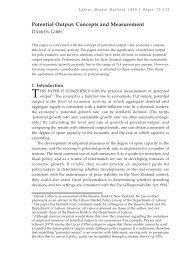

![a note on levels, trends, and some implications [pdf 21 pages, 139KB]](https://img.yumpu.com/27285836/1/184x260/a-note-on-levels-trends-and-some-implications-pdf-21-pages-139kb.jpg?quality=85)


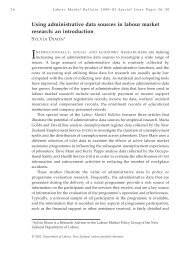
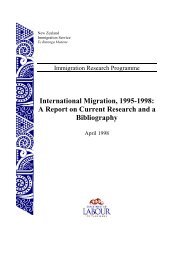
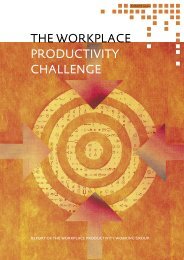
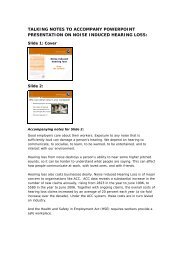
![Labour Market Trends and Outlook - 1996 [pdf 18 pages, 94KB]](https://img.yumpu.com/27285764/1/184x260/labour-market-trends-and-outlook-1996-pdf-18-pages-94kb.jpg?quality=85)

